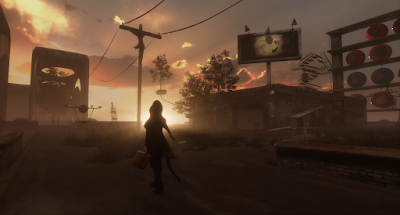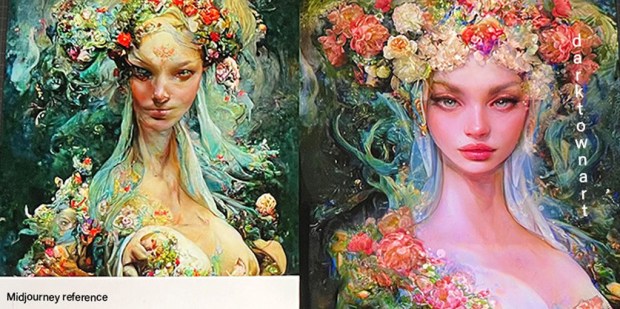Jüdisches Museum in Berlin - Obedience - part three
 |
| initial sketch |
The first scene shows Abraham holding his infant son Isaac and nursing him with his pinky finger while they look into each others eyes. It is an intimate moment where a Father connects to their
child, unable to feed them, yet knowing the child innocently looks to them for sustenance. You are their world and they are yours. My mother once told me a story where her and her brother, as children, were playing by one of those vintage china cabinets made of oak. She remembers that the
cabinet had cut out scrollwork at the bottom, and that her brother wedged his head under it and then could not get out again. He screamed in fear and my Mother describes how my Grandmother rushed into the room and literally lifted up the extremely heavy cabinet and held it as her son took out his head. A seemingly impossible feat done through fear, love and adrenaline. If it were a bear or wolf threatening her child, she would have fought it with her bare hands without a thought to herself. Abraham no doubt also had this type of strong connection to his son and I wanted to show just what God was asking of him if possible.
Too much technical preoccupation in an artwork makes it stale yet, to me, no planning or understanding of the space you work in often creates work that lacks focus or the ability to connect the viewer to the artwork. My favorite art and artists generally are able to maintain a spontaneous freedom in their work yet have a sophisticated understanding of what they do and why. There are always those who do very technical pieces that I absolutely adore and others, such as folk artists or outsider artists, who astound me with their spontaneous creations. On the whole I tend to like a balance and that, quite likely, is why my work is balanced that way too. This next portion, as requested, is the technical reasoning for how this build was composed. Each scene is a oasis of light in a dark ocean of shadows. My interest is in creating scenes of stillness with just a hint of motion here and there. Almost like a snapshot in time that is slowly returning to normal speed. It is the place between a static painting and full movement such as in cinema. Ambient sound is important to me for creating mood as well as narrative, interaction and freedom within the virtual space. Layering of meaning is also quite important to me in that it rewards those who, like me, enjoy looking under rocks and general discovery. But for me that discovery can not be a simple thing that everyone finds.. the viewer must feel like they have found something that very few unearth. I believe that intimacy is important, though each build is created in such a way that it is never essential to find the layers. Some want a casual stroll in the park and some want to go camping. Both are equal.
 The main purpose of this build is to accommodate the guest at the museum who, in most cases, has no experience with a virtual space, with the controls needed to move and so on. I have created spaces such as this a number of times in the past for real life events and generally, the visitor will explore for 30 seconds to five minutes. The reasons for this are many. For example they may be with a friend and can't become immersed, they are too excited to sit for a long time, there are people waiting to use the kiosk and they feel obligated to let others try and so on. The build itself is too long and tricky for a visitor at the museum, but not for the experienced second life user who has not been ignored. The museum visitor observes the first scene and then walks towards the next spotlight in the darkness. This give s the impression of great space and claustrophobia at the same time and the light beacons lead the viewer without having to use ground arrows which break the immersion. Once they arrive there they are introduced to a new scene that is bordered in darkness thus creating a familiar frame for them to understand and look within. They explore various scenes and then leave the computer to go into the rest of the museum, the avatar is scripted using the experience tools (with a great script by Caer Balogh) to teleport back to the starting point if the avatar has not moved for five minutes. This allows each new visitor to start from the beginning and helps prevent the avatar from getting wedged into unexpected places as noobs are so successful at doing.
The main purpose of this build is to accommodate the guest at the museum who, in most cases, has no experience with a virtual space, with the controls needed to move and so on. I have created spaces such as this a number of times in the past for real life events and generally, the visitor will explore for 30 seconds to five minutes. The reasons for this are many. For example they may be with a friend and can't become immersed, they are too excited to sit for a long time, there are people waiting to use the kiosk and they feel obligated to let others try and so on. The build itself is too long and tricky for a visitor at the museum, but not for the experienced second life user who has not been ignored. The museum visitor observes the first scene and then walks towards the next spotlight in the darkness. This give s the impression of great space and claustrophobia at the same time and the light beacons lead the viewer without having to use ground arrows which break the immersion. Once they arrive there they are introduced to a new scene that is bordered in darkness thus creating a familiar frame for them to understand and look within. They explore various scenes and then leave the computer to go into the rest of the museum, the avatar is scripted using the experience tools (with a great script by Caer Balogh) to teleport back to the starting point if the avatar has not moved for five minutes. This allows each new visitor to start from the beginning and helps prevent the avatar from getting wedged into unexpected places as noobs are so successful at doing. |
| eyepath |



Comments